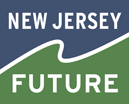As the nation’s most densely populated state, New Jersey packs in more people per square mile than anywhere else. Our most vibrant cities and towns include compact, walkable downtowns and active streetscapes—complemented by accessible greenways and trails for recreation, a respite from urban life, and healthy, carbon-free travel. But being the Garden State, we can do so much more.
Bicycle and Pedestrian
Unlocking Opportunities: Securing Funding for Trail-Related Projects
Monday, June 24th, 2024NJDOT’s Safe Streets to Transit Program Is Improving Communities Across the State – Yours Can Be Next
Tuesday, March 19th, 2024Simple, small-scale transportation features make a community a safer, healthier, and more affordable place to get around. In a community that values street safety, crosswalks are clearly marked and strategically placed to ensure easy and safe passage for pedestrians.
Accessing New Federal Funding for Active Transportation Projects: Camden County Got a Bunch, How Can You?
Monday, September 18th, 2023The Infrastructure Investment and Jobs Act (IIJA) was signed into law by President Joe Biden on November 15, 2021, investing $1.2 trillion in America’s infrastructure. From the IIJA, New Jersey municipal, county, and state governments have the opportunity to tap into once-in-a-generation funding programs, many of which support safe and accessible transportation alternatives for walkers, bikers and rollers.
Creating Safe Communities and Options for Walk-Bike-Ride Transportation in New Jersey
Tuesday, August 8th, 2023“Every decision about transportation is an opportunity to build a clean, healthy, and more prosperous future,” declared Christopher Coes, Assistant Secretary, U.S. Department of Transportation (DOT) as he provided prepared remarks to open the session “Delivering Walk-Bike-Ride Transportation in New Jersey” at the 2023 Planning and Redevelopment Conference co-hosted by the NJ Chapter of the American Planning Association and New Jersey Future.
Rolling Along: Why New Jersey Should Join Other States and Offer an E-Bike Incentive Program
Wednesday, May 17th, 2023Electric bicycles, along with programs intended to incentivize their adoption, are rolling out across the country and New Jersey can’t afford to be left behind in this transportation revolution. Transportation emissions, which account for more than a third of all total greenhouse gas emissions in the state, are a critical target for climate change mitigation, necessitating the use of every tool to help us drive less.
Opinion: Car-Free Inspiration From an Overseas Adventure
Monday, May 1st, 2023For four months last fall, my lifestyle changed dramatically when my husband and I lived car-free. As life-long suburbanites, we have always driven a lot to get around. I was the mom-in-the-minivan, and am now the professional-in-a-Prius. But when we took an overdue sabbatical, we lived near universities in three developed countries — England, Germany, and Japan — where everything we needed was within easy reach by foot, bike, bus, or train.
Helping NJ Drive Less: The Need to Dedicate Funding to Transit and Safe Streets
Tuesday, January 31st, 2023Electric vehicles are great, but they won’t reduce greenhouse gas (GHG) emissions in the transportation sector fast enough, nor will they do anything to alleviate congestion. This past October, the United Nations published the Emissions Gap Report 2022, declaring that an important action for the transportation sector is to “integrate land use and transportation planning to prioritize public transit over private automobiles.”
Amidst rising pedestrian and traffic fatalities, New Jersey seeks to advance safe street design
Tuesday, July 19th, 2022Street fatalities are on the rise nationally, and right here in New Jersey. The National Highway and Traffic Safety Administration (NHTSA) reports that 2021 marked a 16 year high in roadway fatalities. In New Jersey, our streets and roads claimed 699 lives in 2021, with 220 pedestrian fatalities accounting for approximately 30% of those fatalities.
Supporting Equitable Access to Transit and Active Transportation
Monday, May 23rd, 2022Creating opportunities for more people to walk, bike, and take public transit is a critical element of growing and developing smarter. As we improve infrastructure and programs to accomplish this goal, we must make sure that we are improving access for everyone, especially those who have traditionally been, and continue to be, excluded or made to feel less safe in these spaces.
Walking and Biking Are Transportation Too
Friday, February 18th, 2022Local officials, engineers, and transportation planners must start designing streets to convey the message that streets are places where people come first, and vehicles are secondary. “Transit-oriented development” is ultimately about pedestrian-oriented development, since everyone is a pedestrian once they step off the bus, train, or subway.











